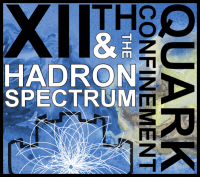Speaker
Description
The overarching science challenges for the coming decade are to discover the meaning of confinement, its relationship to dynamical chiral symmetry breaking (DCSB) - the origin of visible mass - and the connection between these two, key emergent phenomena. There is strong evidence to suggest that they are intimately connected with the appearance of momentum-dependent masses for gluons and quarks in QCD, which are large in the infrared: $m_g \sim 500\,$MeV and $M_q \sim 350\,$MeV. DCSB, expressed in the dynamical generation of a dressed-quark mass, has an enormous variety of verifiable consequences, including an enigmatic result that the properties of the (almost) massless pion are the cleanest expression of the mechanism which is responsible for almost all the visible mass in the Universe. These emergent phenomena are expressed with particular force in the partonic structure of hadrons, e.g. in valence-quark parton distribution amplitudes and functions, and, consequently, in numerous hadronic observables, including elastic and transition form factors. This presentation will highlight that with the identification of these connections we are now in a position to exhibit the consequences of confinement and DCSB in a wide range of hadron observables, opening the way to empirical verification of their expression in the Standard Model.
